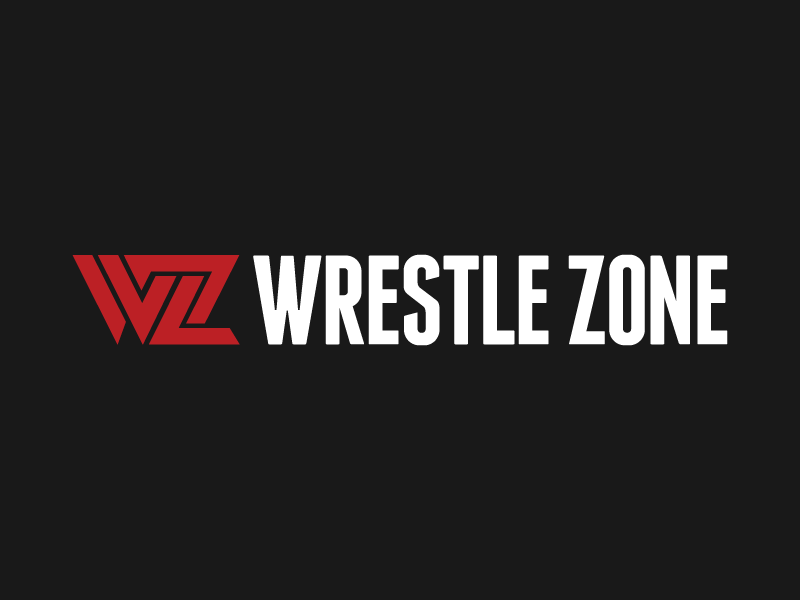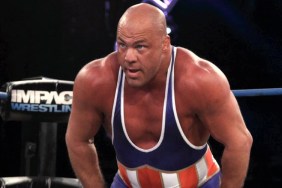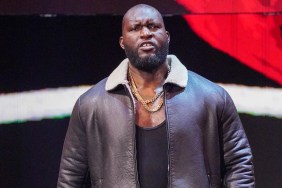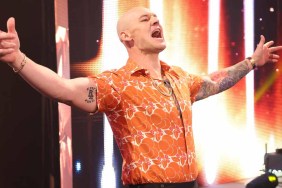
In wrestling’s past things were simple. The babyfaces and the heels were clearly defined. The face could do no wrong and the heel was easy to spot. We were told who was good, who was bad, and we cheered and booed accordingly. But not anymore. With the advent of the IWC, the world of sugary sweet babyfaces and dastardly heels has been turned on its head. The face is being booed and the heel is being cheered in the arenas. The IWC has created a new criterion for who deserves to be cheered and who booed. This, then, creates a duel identity for the wrestler. There is the character that they are portraying versus the character the fans perceive them to be.
The examples are abundant. When Edge returned after a year off from neck surgery I fully expected him to receive a warm welcome back. He came back as a face, but the fans booed him anyway. He was even booed in his hometown. The WWE had no choice but to oblige the fans and turn him heel. From there he has evolved into what he is today, but there in lies an interesting point. While the fans generally continue to boo him in the arena, he has gained the respect, for the most part, of the IWC and is regarded by many as a favorite. This is a duel identity.
In Kurt Angle’s recent feud with John Cena, the WWE pushed Angle as hard as they could to be a huge heel. Yet the fans continued to cheer him. Week after week he continued to be cheered at a greater rate. The WWE actually went so far as to have him criticize the troops overseas in an attempt to get cheap heat, but it didn’t work. Many argued that he was being cheered simply because he was facing Cena at the time, but after being removed from this feud he still was cheered. The WWE eventually oriented his character in more of a babyface direction which is his status at the moment but the duel identity was obvious. No matter how hard he was pushed as a heel, he was cheered as a face.
IWC rumors swirled that Angle was criticized by Triple H for not being able to keep his heel heat in his feud with Cena, but Triple H is in a similar position now. Triple H has long been WWE’s top heel. He has been even more hated by the IWC because of his so called “backstage politics”. Yet just last week on RAW he received the biggest pops of the night. He was over like the biggest babyface around. Even the IWC is coming around and he’s becoming more popular in these circles as well. Again, this is another example of a duel identity.
Hulk Hogan, on the other hand, is an interesting example. He’s the biggest babyface in the history of the sport and every time he turns up on the scene the crowd goes crazy. Yet there has been a backlash among IWC members regarding Hogan. If a poll were taken among IWC members you might just think Hogan were a heel. More and more people have spoken out against Hogan and how he has managed to stay at the top for so long. This is a spot many think he need not have anymore. This is just one reason why the IWC has turned against him. Here, his duel identity lives exclusively within this community, and not so much with the “casual” fan.
This brings me to my last and most obvious example: John Cena. His rise to popularity came in the form of a quick talking, hard nosed, “gangster”. The fans enjoyed watching him verbally abuse his opponents night after night. But soon, the more he was cheered, the more his character was shifted in a new direction. He is now portrayed as the WWE’s biggest face but he’s booed more than any superstar I have seen in WWE’s history. He seems to be hated by both the “casual” fan and the IWC. None the less he continues on the path of a babyface. This is the best example of a duel identity. The fans have turned on him and because of this he can be seen as both the biggest face and biggest heel in the company at the same time. His character may not be traditionally what we’d consider heel, but the fans treat him like the worst of the worst.
This leads me to ask the simple question of why. Why has this trend developed among wrestling fans? Fans are no longer receptive to who the WWE tells them to cheer and who they actually cheer. I think the answer is two-fold. First and foremost I think fans have developed new criteria for who deserves to be cheered. Fans no longer rely on how the character is being portrayed on television but words like workrate”, “backstage politics” and “respect” arise when considering a wrestler’s place. Actual wrestling skill has been increasingly important in determining who is cheered and who isn’t. These wrestlers, the Angles, the Benoits, and the HBKs; they earn the respect of the fans. They earn the right to be cheered. Backstage politics also plays an important role. In an era of “behind the scenes” news, fans always are questioning who is influential and being pushed because of “politics”. Fans, and especially the IWC, may base their opinion of a wrestler almost solely on what kind of backstage pull they’re using to get where they are. Generally, men like HHH and Hogan have been vilified by the IWC because they are seen to be too influential backstage and use that to an unfair advantage.
I think another separate and totally unique factor is the idea that many fans are followers. We as fans many times tend to jump on the bandwagon in regards to what is popular and what is not. It is the “in” thing to boo Cena out of the building night after night. While many fans may think this treatment is warranted, I guarantee one of the main reasons it happens is because of this mob mentality many fans have. And I know that eventually the tides will change, and the fans will follow.
This trend of duel identities is relatively new but I don’t think it is something that will go away. The WWE will present a character who they would like the fans to react one way to, but that certainly won’t always be the case. The WWE must realize that the traditional ideas of “face” and “heel” no longer apply across the board. Times have changed, and I think eventually pro wrestling will change with them.








